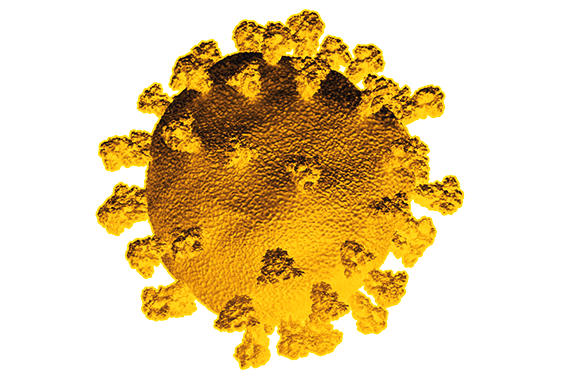


As the virus swept the globe, brands changed how they interacted with customers due to social distancing and stay-at-home orders. Consumer buying patterns also shifted with fluctuations in the stock market, skyrocketing unemployment and supply chain issues. As many people lost their jobs and those still earning a paycheck worried about future layoffs, impulse purchasing became infrequent. Messages that resonated with consumers a few weeks prior suddenly fell flat and even seemed insensitive.
“Some brands want to use campaigns that they shot in Q1, thinking if they wait, they can play it,” says Aki Spicer, chief strategy officer at Leo Burnett. “But you aren’t going to want to release a commercial for your vodka brand with people at a rave anytime soon. Everything has changed in the world, and marketing needs to reflect the brand’s values, which hopefully are right for our current times.”
COVID-19 affected nearly every aspect of marketing because crises of this scale challenge the core of business basics, says Timothy Calkins, clinical professor of marketing at Northwestern University’s Kellogg School of Management. Some companies were left unable to do any sort of commerce, while others struggled with too much demand. “It’s a very rare company that can use the business model and marketing that they used pre-pandemic,” Calkins says.
In the early weeks of the pandemic response, many brands implemented a crisis marketing strategy, pivoting messaging and offers as quickly as possible. Hotels.com shifted ads with its mascot, Captain Obvious, from partying with friends to eating popcorn alone with a bottle of hand sanitizer. Panera launched Panera Grocery, enabling customers to buy high-demand grocery items it already stocks in its restaurants—such as bread, produce and milk—along with soups and sandwiches. In an effort to help parents with kids at home full time, Time for Kids magazine gave anyone access to its 2020 digital editions for free, and Amazon Prime provided kids with free video content.
While many brands made short-term changes during the initial crisis, companies must now look longer term and build the foundation to stay connected with customers. According to an article in the Journal of Advertising Research, brands that reduced advertising spend during recessions decreased sales revenue once the economy picked up. If history shows that brands that continue to market during down times will likely come out ahead, what are the rules of engaging in a world where the “next normal” is still to be defined?
Yes, it’s a different world, but “these are not unprecedented times,” Simon Sinek, author of Start With Why and The Infinite Game, said in a company video on YouTube. “The invention of the internet put many, many companies out of business—the ones who could not reinvent their companies for the internet age but rather doubled down on the old way they did business,” he explained.
The opportunity is to shift from survival mode to reinvention mode, to focus on what will be instead of trying to preserve what we had.
“Everything has changed in the world, and marketing needs to reflect the brand’s values, which hopefully are right for our current times." —Aki Spicer, Chief Strategy Officer, Leo Burnett
As stay-at-home and social distancing orders took hold in the spring, customers relied even more heavily on digital and mobile platforms as their smartphones became a lifeline to the outside world. New virtual behaviors emerged and expanded as consumers completed their daily tasks digitally, such as curbside pickup, telehealth appointments, online workouts and contact-free delivery. And as many people worked from home, went to school online, and connected with family and friends virtually, video chat use exploded. The video chat platform Zoom saw a staggering 418% growth in adoption rate in two just months.
In response to these new behaviors, brands proactively showed customers how they fit into new routines and expectations. Pizza Hut rolled out tamper-proof seals, making it apparent if anyone has opened a pizza box before it gets to the intended destination. Beauty brand MAC created a tool to let customers virtually try on lipstick and eye shadow since they could no longer sample colors at a makeup counter or MAC store.
Even as physical businesses open up, the influence of social distancing is likely to stay with consumers longer term. Many of these new behaviors may turn into long-term habits instead of short-term solutions executed in crisis mode. “You need to re-create the customer journey for these times, and then prioritize investments based on what you learn,” says Brian Solis, global innovation evangelist at Salesforce and author of X: The Experience When Business Meets Design.
Marketers need to take a fresh look at what people are searching for, where they’re going, what they value and what they’re finding, Solis says. In mid-May, for example, “golf push carts” became a top-growing query on Google as some states reopened golf courses but restricted use of gas-powered carts. At the time, Dick’s Sporting Goods ranked No 1. in Google search results with the title tag, “Golf Push Carts for Sale | Curbside Pickup Available at Dick’s.”

Consumer needs are changing as a result of the pandemic. The way people interact with brands—and how they view themselves as consumers—is fundamentally different than it was pre-quarantine. Spicer has seen three major shifts in consumer buying habits:
Home: People are spending more time in their homes, which has both practical and emotional effects. A conversation Spicer had with Samsung centered on how people are rethinking the role that products such as home appliances now play. Not only do appliances need to work, but people have other considerations as well, such as: Is my washing machine quiet enough to have a Zoom call in the next room? Does the vacuum clean deep enough to remove germs? Where are appliance materials sourced from?
Nostalgia: Change gives rise to anxiety, and anxiety triggers consumers’ nostalgia for happier times. “We’re looking for a bit of nostalgia in the shows and content we’re consuming, down to the kinds of food we’re bringing into our homes,” Spicer says. “That comfort and nostalgia become a new essential.” With a shift to more shelf-stable products, people are revisiting brands that haven’t been in their pantries or freezers for quite some time. Spicer says that if those brands focus on demonstrating their values, they’re more likely to stick around in those homes long term.
Self-reliance: The typical consumer is taking on more responsibility for tasks they would normally hire someone to do for them or outsource. People are being more creative with meals, as trips to the grocery store and restaurants became risky. Many men are cutting their hair at home. Will people continue to pay for these services (dining at restaurants, getting their hair cut at a barbershop) after discovering they can successfully do it themselves? As consumers realize everything they can accomplish themselves, brands will be pushed to actively show why their product or service is valuable—and ultimately why it’s worth paying for.
Consumer shopping habits and behavior shift constantly, but in pre-COVID times, brands could normally pivot on smaller scales to make a difference—like offering gluten-free options or making content available on streaming platforms. Coming out of the pandemic, people are thinking about their role as consumers differently, which will force brands to make larger fundamental changes to anticipate new consumer needs.
“These are not unprecedented times. … The invention of the internet put many, many companies out of business—the ones who could not reinvent their companies for the internet age but rather doubled down on the old way they did business.” —Simon Sinek, “These Are Not Unprecedented Times”
Brands now have an opportunity to revise and rebuild their relationships with consumers.
Physically, people are now on devices and networks that weren’t previously commingled—such as work computers on home IP addresses. Additionally, more individuals in the house are on those Wi-Fi networks across devices, making unique identification complicated. More existentially, people are craving relationships and connection. They’re likely not expecting brands to fill that need, but any brand that does will be rewarded for its efforts.
“COVID-19 is going to affect the platforms you use, the content you create, the offers you design and campaigns to support those offers,” Solis says. “Essentially, you have the opportunity to start from scratch and build those touchpoints, hopefully investing heavily in artificial intelligence and machine learning across the journey.”
But the stakes are also much higher: The gap between hit and miss has gotten wider in this time of increased sensitivity and anxiety.
Rothy’s, a direct-to-consumer brand that sells sustainably made shoes, announced it would donate five disposable masks to frontline workers with every purchase in April and immediately received backlash from customers who viewed the policy as a self-serving ploy to drive sales. Rothy’s quickly responded with a “we’re listening” message that announced the end of the purchase-to-donate program and a commitment to simply donate 100,000 masks.
“If empathy was once a marketing strategy for messaging, it’s now a mandate for brands,” according to Spicer. However, empathy can’t come across as feigned. Most inboxes are stuffed with faux-caring emails from every brand consumers have ever ordered from, offering their condolences before they talk up their exciting new promotion.
Many brands turned to gamification as a way of providing something fun and valuable to consumers. Dior developed a card game for people to print out and play while in isolation; Chick-fil-A got kids involved by providing music and lyrics to the song “Rockin’ Robin” and sharing renditions on social media; and Canva, a graphic design platform, offered a free (and personalized) version of bingo.

Because COVID-19 impacts consumers differently across states and geographic areas, brand marketers should carefully think through how a range of consumers will react. How will your campaign play in big cities like Atlanta or New York and in smaller towns in rural areas? And how do you shift the messaging based on location?
Concern over health and safety, especially personal contact and large groups, will likely remain with us for months and possibly years. While some pre-COVID-19 behaviors will return at some point, many of the changes that occurred during the pandemic are likely to become permanent, especially new habits like video chats with family, telehealth visits with doctors and virtual workouts at home.
Moving forward, Solis advises marketers to look at the journey—not just the individual touchpoints they represent for a complete overview of the customer’s experience and where to add value. “This is an opportunity to be open-minded, think differently and allow yourself to not know all of the answers,” he says. “During these times, organizations need to most of all find more opportunities to be more human.”
Brands should look to build their infrastructure and future products to support this likely permanent shift to using virtual platforms and options when possible. Even without mandatory social distancing guidelines, many consumers will continue to favor online activities due to the convenience factor.
The cornerstone of marketing has always been creating connections with customers. The pandemic created a new world where relationships with both people and brands became more important than ever. By closely monitoring ever-shifting customer sentiment and priorities, and leveraging tools to ramp up personalization, businesses can leave the crisis with new long-term customers.
“Whatever you sold before has a new context,” Spicer says. “What does your bourbon look like when there is no bar? Every product, every brand has to do a bit of recontextualizing their product in this new environment. There’s work to be done."

Image credit: Illustrations by Erik Carter